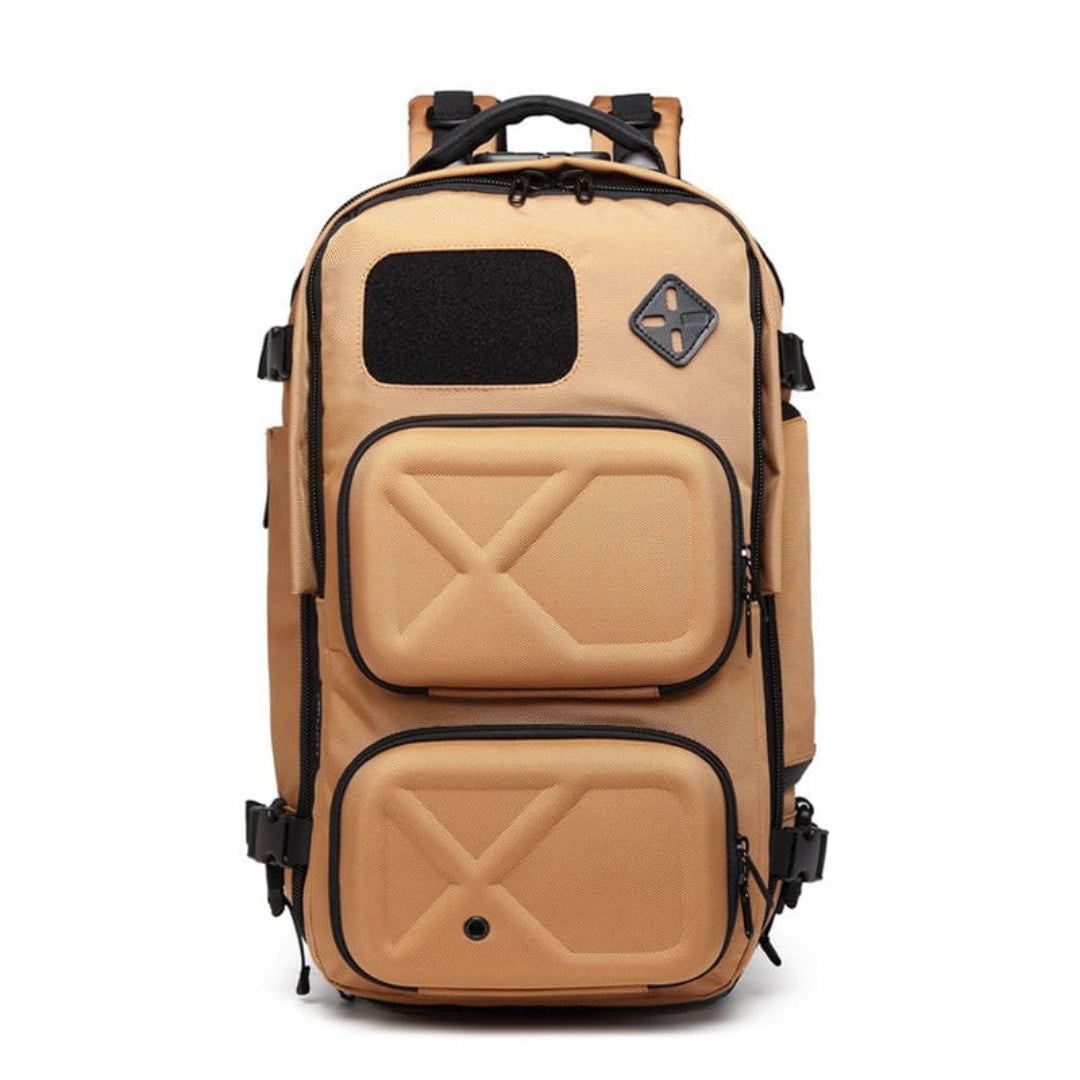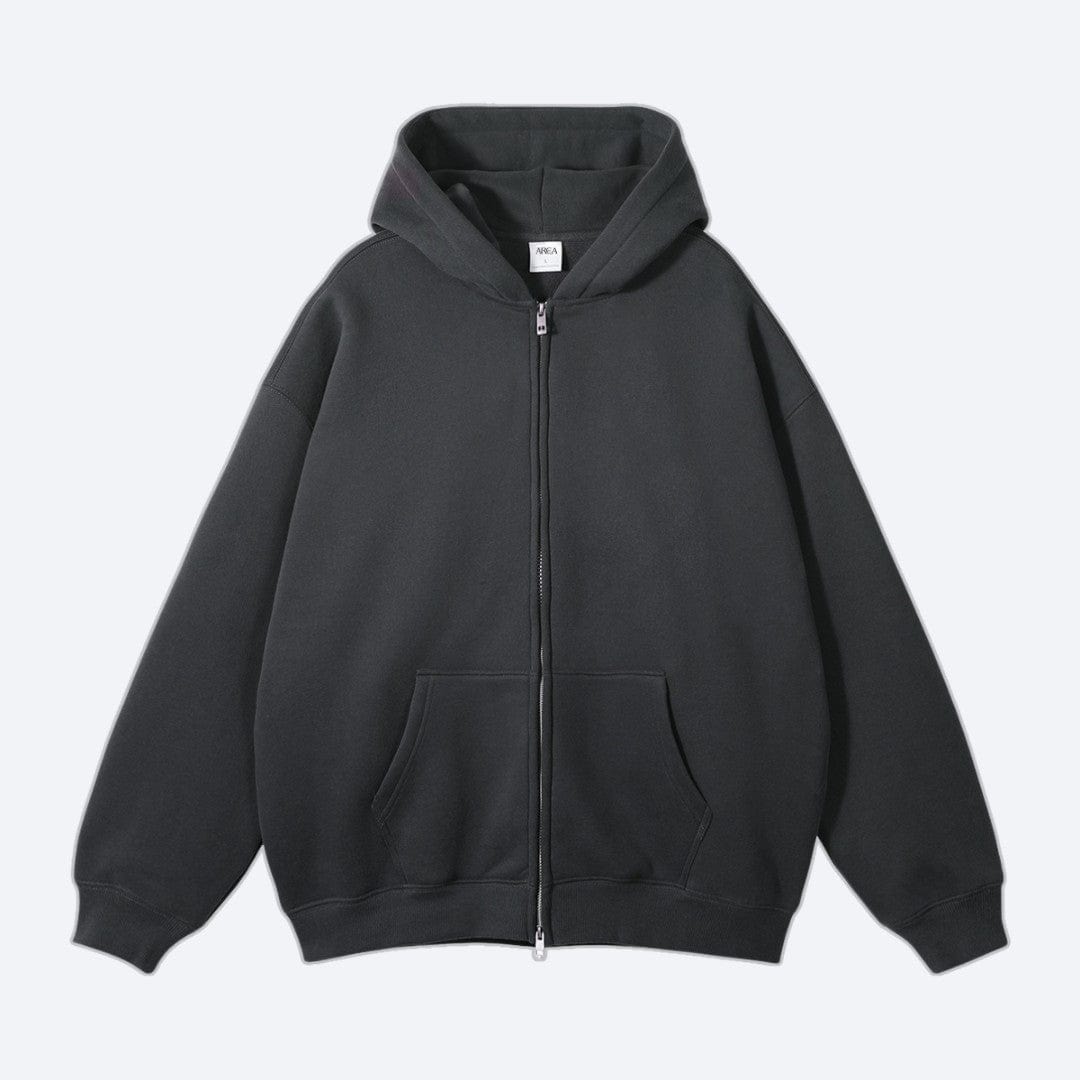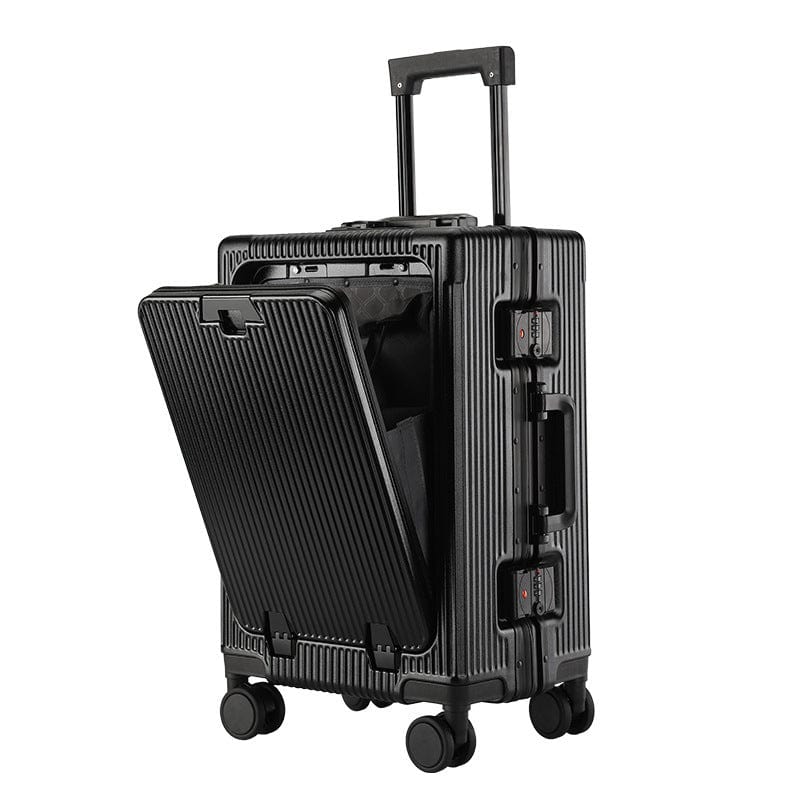Packing for a trip to China can feel both exciting and overwhelming. With its rich culture, diverse landscapes, and bustling cities, China offers endless adventures—but knowing what to bring is crucial for a smooth journey. From essential documents to travel-friendly items, packing smart can save you from unnecessary stress and extra baggage fees.
Chinese domestic flights often have strict luggage allowances, so careful planning is key. Economy class typically permits 20kg, while infants with booked seats get 10kg. Beyond weight limits, you’ll need to consider the unique needs of your trip, whether you’re exploring ancient temples or navigating modern metropolises.
Basic China Packing List
Preparing a practical and lightweight packing list ensures a hassle-free journey to China. Here's a breakdown of key items you won't want to leave behind.
Travel Backpack
A travel backpack offers versatility across different terrains and transportation modes in China. Look for one with multiple compartments to keep your gear organized. Adjustable height harnesses and durable, waterproof materials enhance comfort and functionality, especially for heavy-use days. Avoid overpacking to keep it manageable.
The Essentials
Carrying essential documents and resources avoids potential hassles during your trip. Include the following:
- Passport copies
- Driver’s license or alternative ID
- Guidebook
- ATM/credit cards
- Emergency cash
- Travel insurance details
- Inflatable neck pillow and earplugs (optional)
- Durable chopsticks (optional for food enthusiasts)
Electronics
Electronics play a vital role during your visit, from navigation to entertainment. Bring these:
- Plug adaptor, especially for Type I sockets common in China
- Converter for high-powered items like hair dryers
- Headphones
- Chargers for all devices
- Alarm clock (your phone works fine)
- Digital camera for night photography (optional)
- Portable recharger (optional)
- Smartphone loaded with a translation app, offline maps, and digital copies of travel documents
- Tablet stocked with books, games, and movies
Ensure you prepare for limited internet access due to China's "Great Firewall."
Clothing
Lightweight, easily washable clothing simplifies your packing. Select versatile options for changing climates and consider packing:
- 3 pairs of comfortable pants, including one dressy option
- 1-2 pairs of shorts
- 3-5 short-sleeve shirts
- 1-2 long-sleeve casual or formal shirts
- 1 dressy outfit for formal occasions
- A fleece jacket or hoodie
- 3-4 pairs of travel underwear
- 4-6 pairs of socks
- 2 jackets (a fleece and a waterproof/windbreaker)
- Sun-blocking hat
- Swimsuit
Opt for quick-dry fabrics to deal with limited access to dryers.
Shoes
Comfortable footwear ensures your feet won't suffer after long days of sightseeing. Depending on your plans, pack:
- A sturdy, comfortable pair of walking shoes
- Adventure sandals for warmer areas
- Flip-flops for showers or beach visits
- Waterproof winter boots for colder regions
Choose shoes that suit specific activities and environments you'll encounter.
Daypack
Daypacks serve as convenient carriers for daily outings. Consider how you'll use it before purchasing. If you plan to carry fragile electronics, a padded daypack with a laptop sleeve and ergonomic straps adds extra protection and comfort. For general sightseeing, lightweight options are sufficient. Keep essentials like water, snacks, a camera, and travel documents within easy reach.
Toiletries
Stick to the essentials and opt for travel-friendly, dry options to save space. Bring:
- Shampoo and conditioner (China's versions often cater to dark hair)
- Toothbrush and toothpaste
- Razor
- Deodorant (hard to find in China)
- Emergency tissues
- Medications (ibuprofen, stomach aids, jet lag pills, prescriptions, etc.)
- Soap
Focus on your specific needs since most items can be locally purchased if necessary.
The Ultimate Carry-On Travel Backpack for Your Trip to China
A reliable travel backpack is the cornerstone of a successful trip to China. I found a 40L backpack to be the sweet spot for my two-week adventure. It was compact enough to meet carry-on requirements but spacious and well-structured to hold my essential gear. If you're traveling for fewer than ten days, a 30–40L size may suffice, depending on your packing style and itinerary.
Choose a backpack with multiple compartments to help organize items like documents, electronics, and toiletries. Mine included a dedicated laptop sleeve, making it convenient to access my devices during security checks. Ensure it's lightweight yet durable, as airport baggage handling, train rides, and uneven roads in China can put your bag through some serious wear.
Lastly, ensure it has secure features like lockable zippers for peace of mind while your bag's out of sight, whether stored in a locker or the overhead storage compartment on a train. A well-chosen carry-on travel backpack provides versatility and convenience, making every part of your China trip more manageable.
Packing for China in Winter
Winter in China varies dramatically across regions, so packing needs to be tailored to your destination. Focus on layering and weather-appropriate gear to stay comfortable in varying climates.
Northern China
Northern China experiences cold and snowy winters, with temperatures often below freezing. Pack strategically for warmth and mobility.
- Double-layer jacket: A fleece-lined inner layer with a water-resistant outer shell offers flexibility and warmth.
- Insulated boots: Waterproof and insulated footwear is essential for navigating snow.
- Thermal layers: Pack two sets of long underwear tops and bottoms for effective layering.
- Sweaters and shirts: Bring two sweaters and two long-sleeve shirts to stay warm indoors and out.
- Accessories: A winter hat, scarf, wool socks, and gloves are non-negotiable for cold weather.
- Reusable hot water bottle: Ideal for carrying hot tea or water, staying in tune with local customs.
Avoid packing summer items like shorts or sandals. Layers are key for adapting to indoor heating and icy outdoor temperatures.
Southern China
Southern China has milder winters, with daytime temperatures ranging from the mid-40s to mid-60s. It’s still important to prepare for chilly mornings and evenings.
- Sweater and extra long-sleeve shirt: A lightweight sweater and additional long-sleeve layer keep you comfortable during temperature dips.
- Wool socks: One pair of wool socks provides warmth on cooler days.
- Light accessories: Bring a lightweight hat, scarf, and gloves for mornings and evenings.
- Comfortable shoes: Opt for closed-toe, versatile footwear to handle various activities.
Omit sandals and keep clothing lighter than what’s needed in the north, but be prepared for weather shifts.
Western China
Western China, including Tibet and Xinjiang, experiences frigid winters with temperatures as low as 0-10°F. Pack for extreme conditions and outdoor activities.
- Warm jacket: A down jacket with a hood provides essential insulation.
- Thermal and wool layers: Add two wool or sweat-wicking long-sleeve shirts and pants.
- Snow-ready footwear: Snow boots with strong grip ensure safety on icy terrain.
- Waterproof pants: These prove invaluable for hiking through deep snow.
- UV protection: Sunglasses and sunscreen designed for high altitudes combat strong sunlight.
- Cold-weather accessories: Bring a winter hat, scarf, gloves, and additional sweaters.
Remove summer gear entirely. Layering for warmth and protecting against snow and sun exposure becomes the priority in this region.
Packing for China in Spring
Spring in China offers diverse weather conditions, with temperatures ranging from the mid-50s°F in the north to the upper-70s°F in the south. Packing appropriately ensures comfort and preparedness, whether exploring bustling cities or rural landscapes.
Northern China
Northern China in spring is cool and dry, with occasional dust storms originating from the Gobi Desert. To stay comfortable:
- Pack one pair of long underwear for colder evenings.
- Include a fleece jacket as a versatile outer layer, ideal for activities like exploring Beijing's hutongs or overnight train rides to Xi’an.
- Bring a face mask to protect against dust.
- Add a light hat, scarf, and gloves for extra warmth on windy days.
Other clothing and footwear can remain consistent with mild spring travel.
Southern China
Spring in southern China introduces warmer, more humid conditions compared to the north. The temperatures, along with the start of the rainy season, generally align well with the original packing list:
- Carry lightweight layers, including short-sleeve shirts and breathable fabrics.
- Keep a compact travel umbrella or rain poncho to handle sudden spring showers.
This simplified list meets most needs for a southern itinerary.
Western China
Western China experiences dry, windy conditions with intense UV rays due to its elevation. Here's what works best:
- Use UV-protective sunglasses to shield your eyes.
- Carry a thin jacket or sweater for temperature variations.
- Bring a face mask to guard against dust from spring winds.
- Add a light hat, scarf, and gloves for added protection and comfort.
- Avoid sandals, as the terrain and weather aren't suitable for open footwear.
Standard spring clothes and sturdy shoes work well for most activities in this region.
Packing for China in Summer
Packing effectively for China's summer ensures a comfortable trip, whether you're navigating humid cities or exploring rugged terrains. Adjust your packing list based on specific regional conditions for a stress-free experience.
Northern China
Summers in Northern China are hot and humid, with occasional thunderstorms. Prioritize lightweight clothing and practical accessories.
- Carry a small, portable umbrella to stay prepared for sudden downpours.
- Replace one pair of pants with two pairs of shorts.
- Include baby powder to prevent chafing in the humid climate.
- Add two sweat-wicking, short-sleeve shirts and remove one long-sleeve option for comfort.
Retain other clothing and shoe options from your basic packing list.
Southern China
Southern China's summer brings high humidity and monsoon rains. Pack items suited for hot, wet conditions.
- Bring a heavy-duty umbrella for protection during frequent rains.
- Opt for adventure sandals or waterproof shoes for navigating flooded streets.
- Pack a quick-dry towel to wipe sweat off with ease.
- Replace one pair of pants with two pairs of shorts to stay cooler.
- Add two short-sleeve shirts and keep only one preferred long-sleeve option.
- Use baby powder to prevent discomfort from heat and dampness.
Keep all other clothing and shoes in your standard packing list.
Western China
Western China's summers can exceed 100°F in the lowlands but are milder in mountain regions. Prepare for intense sun and heat.
- Pack UV-protective sunglasses for harsh sunlight.
- Include baby powder, especially if wearing skirts, for comfort in dry heat.
- Add one to two pairs of shorts for versatility.
- Increase flexibility by adding one to two short-sleeve shirts.
- Remove one to two long-sleeve shirt options to prioritize breathable attire.
All other items from the basic packing list can remain unchanged.
Packing for China in Autumn
Autumn in China brings variable weather across its regions. Packing adjustments ensure comfort and readiness for cooler temperatures and regional conditions.
Northern China
Autumn is brief in the north, with rapidly cooling temperatures. Key additions to the basic packing list include:
- Thermal jacket: Opt for a warmer jacket to transition directly into colder days.
- Light hat, gloves, and scarf: Essential for keeping warm while outdoors.
- One or two pairs of wool socks: These provide insulation for chilly mornings.
- Fleece layer: Ideal for layering under the jacket for extra warmth.
- Pants a size larger: Useful for comfort, especially if indulging in Autumn Festival mooncakes.
Keep all other clothing and footwear consistent with the basic packing list.
Southern China
Late autumn in the south tends to be milder but can still bring unexpected cool days. Adjustments to the packing list include:
- Warm jacket: A thermal option isn’t necessary, but lighter warmth can help manage cooler evenings.
- One pair of wool socks: Useful for breezy days or higher altitudes.
- Omit adventure sandals: Prioritize closed-toe footwear for added comfort.
Retain all other clothing and shoe selections from the basic list.
Western China
Temperatures drop sharply in Western China during autumn. Additions to the packing list prepare for harsher weather conditions in regions like Xinjiang and Tibet:
- UV-protective sunglasses: Helpful for high-altitude sunlight exposure.
- Thick jacket or sweater: Necessary for staying warm as temperatures plummet.
- Winter hat, scarf, and gloves: Provide protection against strong winds and chilly air.
- Remove warm-weather gear: Store away sandals and summer essentials for this season.
Other essentials from the standard packing list remain unchanged.
General Tips: What to Pack for China
Packing for China requires attention to cultural norms, weather variations, and practical challenges. Incorporating key items into your list ensures a comfortable and culturally respectful trip.
Tip #1: Cover Up
Chinese culture values modesty, with many locals wearing clothing that covers most of their skin. This often stems from a preference for lighter skin tones, which are considered beautiful. You'll notice people using umbrellas on sunny days to avoid direct sun exposure. To blend in and respect local customs, avoid short shorts, revealing tops, or excessive tanning efforts.
Fashion-forward cities like Beijing, Shanghai, and Hong Kong follow more modern styles but maintaining modesty in your attire matters, especially in rural areas or smaller towns. Leave items like crop tops and tank tops at home if you want to match local preferences.
Tip #2: Dryers Are Rare
Washing machines are accessible, but dryers are uncommon across China. Instead of waiting hours for clothes to air dry, include lightweight, breathable fabrics and quick-dry items in your suitcase. Materials like nylon and polyester dry faster than cotton, making them ideal for travel and daily use.
Tip #3: Hit the (Digital) Ground Running
The Great Firewall of China limits access to many websites and apps, so setting up a VPN before your trip is essential. You'll find VPN options online, ranging from free to subscription-based services, but activating them outside mainland China simplifies the process. It's a critical addition to your pre-travel prep.
WeChat, known locally as Weixin, is another must-have app for life in China. It goes beyond messaging, serving as a payment method, social platform, and communication tool. Download this app before arrival to ease interactions with locals.
Translation apps, along with offline maps and guides, are invaluable tools in non-Mandarin-speaking regions. Fill your smartphone with apps that provide navigation and language support to streamline your travels.
Tip #4: Don’t Expect Central Heat
Outside Northern China, housing lacks central heating systems. While winters in southern China are less severe, unheated homes can feel unexpectedly cold. Pack warm pajamas or thermal layers to stay comfortable. Many locals warm up using hot water bottles, which you can also use for added warmth. For travel during cooler months, layer your clothing to prepare for the unpredictable chill.
Wait to Buy in China
I focus on optimizing luggage space by waiting to purchase certain items once I arrive in China. This strategy ensures I only bring essentials while taking advantage of local availability and lower costs.
- Clothing for specific activities: Items like hiking apparel or traditional attire are widely available. I can find affordable and locally-produced options in markets or specialty stores.
- Toiletries and personal care items: Basic toiletries such as shampoo, conditioner, and toothpaste are inexpensive. However, I note that specialty products like sunscreen or deodorant may have limited availability or different formulations.
- Electronics and adapters: Adapters and charging cables for devices are cheaper in China. I also find affordable options for basic electronics at local markets or large retail chains like Suning.
- Snacks and local food: Packing snacks isn't necessary. I explore local supermarkets to try convenient and affordable treats unique to the region.
- Stationery or souvenirs: For note-taking or gifts, I rely on China's extensive selection of colorful and creative stationery at budget-friendly prices.
I make informed decisions based on what’s easily accessible and cost-effective in China, while focusing on packing only critical items before departure.
What to Buy Before Traveling to China
Travel Insurance
Comprehensive travel insurance is crucial for covering unexpected events. Policies that include medical emergencies, trip cancellations, and lost luggage protect against unforeseen disruptions. Ensure the policy extends to China-specific needs like emergency evacuation or medical treatment.
Local Currency
Having some Chinese Yuan (CNY) in cash is essential for small purchases and emergencies. Banks or currency exchange services at home often provide better rates than airports. A mix of smaller denominations, such as 10 or 20 CNY notes, simplifies transactions at markets or street vendors.
SIM Card or Portable WiFi
Uninterrupted internet access enhances convenience during the trip. Purchasing a local SIM card with data or renting a portable WiFi device ensures connectivity for navigation and communication. Verify compatibility with your phone and compare plans for data limits and coverage.
Plug Adaptor
China uses Type I plugs with a standard voltage of 220V. Buying a plug adaptor before departure avoids potential issues with charging electronics. A universal travel adaptor with multi-port options can accommodate diverse devices.
Medications
Bringing necessary over-the-counter or prescription medications ensures health needs are met without relying on unfamiliar local brands. Items like antidiarrheal tablets, pain relievers, and allergy medicines often come in handy. Check airline restrictions for transporting medications.
Comfortable Face Masks
Air quality varies, especially in urban areas. High-quality face masks with effective filtration, like N95 or KN95, offer protection during high pollution levels. Masks also assist in navigating specific weather conditions like dust storms in northern regions.
Modest Clothing
Markets in rural areas may lack variety; packing culturally appropriate attire is more reliable. Blouses, long skirts, or pants are suitable for visiting temples or rural locations. Choose breathable fabrics to handle climate variations.
Lightweight Luggage Handling Items
Purchase reusable packing cubes or compression bags to maximize luggage space. These tools help organize clothing and necessary items efficiently, ensuring smoother transfers between destinations.
Special Tips for the Ladies
Packing specific essentials ensures comfort and cultural appropriateness while traveling in China. I recommend including the following items:
- Modest Clothing: Dresses or skirts covering the knees, and tops with sleeves, are ideal for visits to temples or rural areas where conservative attire is expected. Lightweight scarves can double as a cover-up for shoulders or added warmth.
- Comfortable Undergarments: Bringing enough breathable and quick-drying undergarments simplifies laundry needs, especially when dryers aren't common.
- Skin-Sensitive Toiletries: For those with specific skincare concerns, pack hypoallergenic products; certain items like sulfate-free shampoo or fragrance-free moisturizers may be harder to find locally.
- Personal Hygiene Products: Sanitary products like tampons are less common in China, so consider bringing a sufficient supply. For eco-friendly options, menstrual cups are compact and reusable.
- Weather-Specific Accessories: UV-protective hats, sunglasses, and sunscreen are essential in summer, while insulated gloves and thermal leggings provide added warmth in winter.
This preparation ensures a seamless experience while respecting cultural norms and managing personal needs efficiently.
The Regions of China
China's vast expanse includes diverse regions, each offering unique landscapes, climates, and cultural experiences. When packing, I consider the specific regional characteristics to stay comfortable and prepared.
Northern China
Northern China experiences cold winters and hot, dry summers. Cities like Beijing and Harbin have severe temperature drops during winter. Packing thermal layers, insulated outerwear, and essential winter accessories like scarves and gloves is crucial. Summers call for breathable, lightweight clothing and a portable umbrella due to occasional thunderstorms.
Southern China
Southern China is known for its subtropical climate. Winters are mild but damp, requiring light sweaters and a warm jacket. Summers are humid with heavy rainfall in cities like Guangzhou and Guilin. I pack waterproof shoes, quick-dry fabrics, and a durable umbrella to handle the monsoon season effectively.
Western China
Western China's high-altitude regions, including Tibet and Xinjiang, feature extreme weather conditions. Winters are harsh, with temperatures well below freezing in some areas. Sturdy snow-ready footwear, UV-protective sunglasses, and heavy-duty jackets are essential. Summers in these regions can be hot and dry, so lightweight, UV-protective attire suits outdoor exploration best.
Central China
Central China combines distinct seasonal shifts. Locations like Wuhan and Chengdu have chilly winters, requiring midweight jackets and thermal layers. Summers are hot and humid, making sweat-wicking clothes and a reusable water bottle indispensable. Spring and autumn feature moderate temperatures, so I pack adjustable layers to match varied conditions.
Eastern China
Eastern China hosts urban hubs like Shanghai and Hangzhou. Winters are cold but less severe than the north, so I add a warm coat and thermal socks. Summers bring humidity and frequent rains; I rely on moisture-wicking fabrics and robust waterproof shoes. Transitional seasons are milder, suitable for layering with medium-weight clothing.
Adapted packing ensures proper preparation for each region's climate and geography. Understanding these variances improves efficiency and helps make every China travel experience enjoyable.
TL;DR
Packing for China requires thoughtful preparation to match the country’s diverse climates, cultural norms, and travel demands. By focusing on essentials like versatile clothing, travel-friendly gear, and region-specific items, you can streamline your luggage and avoid unnecessary stress. Don’t forget to plan for weather variations, respect local customs, and equip yourself with tools like a VPN and translation apps. With the right packing strategy, your journey through China will be both comfortable and unforgettable.
















